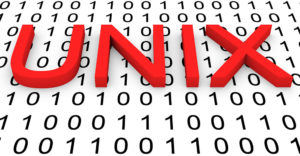Recently, I bumped into a friend (at an appropriate social distance because, yes, this is 2020) that I hadn’t seen in a long time. The two of us have many common interests and little time to discuss them. But in the few minutes before parting ways, we immediately slid into discussing Linux. We talked distros, desktops, configurations, and everything in between.
This serendipitous meeting reminded me of how tightly-knit the Linux community is. So, I thought I would explore what it is about how Linux brings us together. In previous pieces, I profiled some of the hubs where Linux fans convene. This time, I will go more in-depth about what Linux users talk about. Before I’m finished, I have a feeling you will see just what makes Linux such an inexhaustible font of conversation.
Choices Beget Chatting
Merely as a point of comparison, and not as disparagement of users of other operating systems, I have not observed communities as active, vocal, and visible as Linux’s among Windows and Mac users. Admittedly, it is difficult to gauge the entirety of an operating system’s community, so I will consider each respective OS’s customization and theming subculture as a proxy metric.
All things being equal, users of any OS should be equally inclined to break in their UX. In support of this assumption, I have anecdotally observed no correlation between one’s operating system and whether one’s laptop is bedecked with stickers.
There are some Windows themes, but they don’t seem to have a large footprint. Reddit has a few small groups for those interested in tweaking their Windows UI. A lot of Windows GUI customization requires third-party programs, and these usually have forums for sharing recipes.
Aside from these hubs, it was difficult to locate Windows personalization chatter. One can find some articles pointing the way to Windows modification bliss, but these are mostly listicles of theming software. Taken together, I didn’t get the impression there were many spots for Windows modders to chit-chat beyond officially sanctioned customization software forums.
Mac’s themer community seems similar in scope. Articles on first-party settings changes and third-party theming applications are more plentiful for Mac compared to Windows. Reddit has only marginally more populated Mac themer subreddits. I had a hard time finding any other forums where Mac themers socialize. Most Mac theming options I discovered live on GitHub, which, for GitHub’s strengths, doesn’t naturally lend itself to organic dialog.
On the whole, while Mac seemed to have more theming programs than Windows, Mac had fewer forums I could track down. None of this came as a shock, as Apple is historically protective of its UX, and goes to great lengths to discourage users from straying beyond its walled garden — one need only look at how hard Apple makes it for users to install software beyond the App Store.
By comparison, Linux has a veritable sprawl of online tweaker presence. For one thing, the behemoth “unixporn” subreddit dwarfs any comparable Reddit presence. There is also a bustling presence on DeviantArt. And if that wasn’t enough, there’s the fact that every distro and every desktop environment has its own respective forum, too. There are even forums on theme download sites like Gnome-Look and its numerous siblings.
Why Is There So Much Linux on the Web?
I chalk this up to a few factors. First, Linux was practically born on the Web. In Linux’s infancy, Linus Torvalds not only made the kernel available online, but he attracted a throng of would-be contributors via Usenet who collaborated in Linux’s development. The Internet has been a significant distribution channel ever since, facilitating the obtainment and installation of desktop Linux distributions in the large majority of cases today.
Second, since one could not easily purchase a computer with Linux preinstalled until around the last decade, online communities were essential for fielding the questions of Linux initiates. It is comforting to know there are veterans who can help when setting up an entirely new OS, especially one so off the beaten path. This has traditionally been and remains Linux’s main analog to customer support that competing OSes offer.
Finally, and perhaps most significantly, Linux simply offers so many choices. Windows gives you Windows the Windows way. On Mac, you get Mac the way Mac was intended. Not so with desktop Linux. Why? Simply put, there is no one “desktop Linux.” With Linux, every distribution gives you a completely different suite of user programs built atop the kernel, sometimes with its own repackaging of the kernel itself.
Not least of the cornucopia of options that the desktop Linux world offers is that of desktop environments. Most distros present a handful of curated desktop environments. Between all the Linux distros out there, one will encounter literally dozens of them. The only hope a humble Linux user has of figuring out which one they might want, aside from taking them all for a spin, is to ask around. Users also really get into advocating for particular desktops. This is nearly always good-natured, leading to amusing, if not informative, discussion threads.
Talk of the Tux
So, now that we have firmly established that Linux users love to chat, let’s get into what keeps them so occupied.
Few topics are so prevalent among Linux users as distributions. We can easily descend down a rabbit hole purely talking about how Linux users talk about distributions, so let’s keep this high-level. There are many considerations that this topic prompts.
A big one is a distro’s suitability for beginners. Drawing in eager new users is the only way to grow the Linux community. Successful recruitment often hinges on making sure that these neophytes start with a distro that will give them an ideal experience.
Some aspects of a “beginner-friendly” distribution include the availability and amiability of community support, ease of installation, ease of maintenance, and degree of similarity its UI has with those the user is more familiar with.
Of these points, assessing a distro’s ease of installation receives much attention. Discourse on this score can center on whether fewer choices or more choices are better. Some argue that too many choices will overwhelm newcomers who just want to meet the new OS on its terms, while others contend that new users will be put off by the lack of an expected feature.
Distributions are also frequently scored on their customizability. Irrespective of one’s view on customization, the degree to which it is open to users varies from distro to distro. It is common for distros to take the approach of releasing one or more images with a desktop environment baked in.
By contrast, there are still proponents of disentangling the “system” software from the desktop environment, instead letting users pair any desktop with the base system at the time of installation. Debian and Arch Linux subscribe to this paradigm and win many devotees precisely for this trait. Customizability is also dependent on the desktop environment, as the number of UI options in the settings panel varies from desktop to desktop.
The last dynamic of the distribution dialog is size and memory usage. It’s not necessarily a major concern for most, but those with older hardware or the security-conscious may prefer to have as few active processes on their system as possible. For others, system resource footprint is about having enough programs to get normal computing tasks done and nothing more. Argument here typically centers on competing definitions of “enough.”
The next perennial topic of conversation is raw GUI customization. Naturally, much of this talk focuses on desktop environments. What makes desktop environments such fertile ground for discussion is their myriad philosophies, which are defined by their distinct combinations of positions along a few dichotomies:
- Does the desktop try to capture a “traditional” or revolutionary desktop interface paradigm?
- Does it favor sleekness or no-frills functionality?
- Do the developers strive for constant evolution or stability and consistency?
- Are windows, menus, and settings panels minimalist or information-dense?
- Should users accept the UI as it is or make it their own?
The Security Debate
Last but not least, there is an avid segment of Linux users waging the never-ending debate on security. This subject, too, can quickly get esoteric, so I will tread lightly. A regularly recurring security subtopic is whether to embrace a stable or bleeding-edge update model.
Proponents of the stable approach, with its occasional waves of releases, note that the slower pace of releases provides fewer opportunities for introducing vulnerabilities and that the longer interval between releases ensures the methodical review to reduce the number of bugs in each release. Bleeding-edge die-hards point to the quick turnaround for patches and the rapid shedding of legacy code that these distros enjoy.
Then, of course, there is the proverbial ever-thread on what crypto is best. I even waded into this debate with my heterodox argument for file-level encryption as a more practical alternative to the substantially more widely endorsed full-disk encryption.
But even among the full-disk encryption acolytes, some fully encrypt an entire partition and leave it at that, while others set up logical volumes (usually with the LVM utility) inside a single fully-encrypted partition. Still, others are fine with encrypting multiple partitions, each with a different key. These all have their merits, and their adherents will be sure you know it.
Security debates can be dizzyingly complex and spirited. But this is the kind of thing that deserves constant reevaluation, so their energy is aptly spent.
Joining the Flock
So, if you weren’t convinced before that Linux users have plenty to talk about, you probably are now. That is definitely a sign of the wider community’s strength — differences aren’t just tolerated, but celebrated.
The more that Linux keeps us talking, in agreement or disagreement, the more we remember that computing should be a joy, and that we all found that joy in the same humble kernel.























































